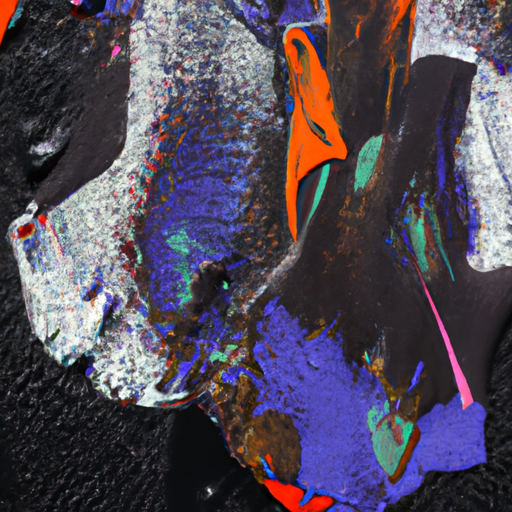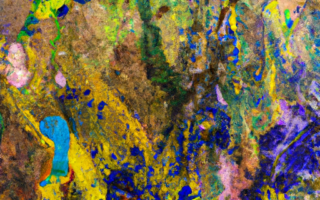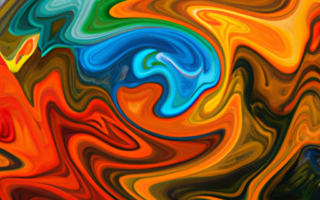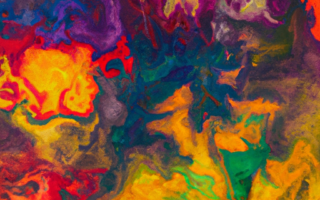Introduction: Exploring the Transformation from Reality to Concept
Introduction: Exploring the Transformation from Reality to Concept
In the realm of art, abstraction is a fascinating concept that has captured the imagination of artists and art enthusiasts for centuries. It is a departure from the depiction of the visible world, allowing for a new level of creativity and interpretation. The transformation from reality to abstract concepts is a theme that has been explored by artists across different mediums and artistic movements.
Abstraction can be seen as a departure from the literal representation of objects, landscapes, or figures. It is a shift toward a more subjective and non-representational form of art that emphasizes the artist’s interpretation and emotional response to the subject matter. This shift is not a complete abandonment of reality, but rather a transformation that highlights the essence and underlying qualities of the subject.
When we examine the process of moving from reality to abstraction, we find that artists utilize various techniques and approaches to convey their conceptual ideas. Some artists may begin with a realistic depiction and then gradually distort and simplify the forms to create a more abstract representation. Others may start with a concept or idea and use abstract forms and colors to express their vision.
The essence of abstraction lies in its ability to evoke emotions, challenge perceptions, and invite viewers to interpret the artwork in their own unique way. By eliminating the constraints of representation, artists have the freedom to explore the power of color, shape, line, and texture to convey their intended message. This transformative process allows for a deeper exploration of the artist’s personal experiences, thoughts, and emotions.
Throughout history, numerous artistic movements, such as Cubism, Abstract Expressionism, and Minimalism, have embraced abstraction as a means of exploring the transformation from reality to concept. Each movement brought its own unique approach, pushing the boundaries of traditional representation and expanding the possibilities of artistic expression.
As we delve into the world of abstraction, we discover a rich tapestry of artistic innovation and experimentation. It challenges our preconceived notions of what art should be and opens up a realm of endless possibilities. From bold and vibrant compositions to subtle and nuanced explorations, abstract art allows us to experience the world from a different perspective.
In conclusion, the transformation from reality to concept in abstraction is a powerful and thought-provoking journey for both artists and viewers. It invites us to question our understanding of reality and embrace the beauty and complexity of abstract forms. By unraveling the essence of abstraction, we discover a world that goes beyond the tangible, offering a deeper connection to the intangible realm of emotions, ideas, and concepts.
Understanding Abstraction: Unveiling the Core Elements
Understanding abstraction is essential when studying the concept of From Reality to Concept: Unraveling the Essence of Abstraction. Abstraction is a fundamental aspect of art, design, and various other creative processes. It involves capturing the essence of a subject, idea, or experience by simplifying and distilling its core elements.
At its core, abstraction is the process of removing unnecessary details and focusing on the fundamental aspects that define the subject. This allows the viewer to engage with the artwork on a deeper level, as they are prompted to interpret and connect with the underlying emotions and concepts.
One of the key elements in understanding abstraction is the concept of representation versus interpretation. While representation aims to faithfully depict the subject as it appears in reality, abstraction seeks to go beyond mere replication. Instead, it aims to convey the artist’s unique perspective and evoke emotions through the use of simplified forms, colors, lines, and textures.
Color plays a vital role in abstraction. Artists utilize color palettes to evoke specific moods, create a sense of harmony or contrast, and guide the viewer’s gaze through the artwork. Bold and vibrant colors can convey energy and intensity, while muted or monochromatic tones can evoke a sense of tranquility or melancholy.
Shapes and lines are another essential element of abstraction. Artists often use geometric or organic shapes to create a sense of balance, tension, or movement. The arrangement and direction of lines can create a visual flow and direct the viewer’s attention to specific areas of the artwork.
Texture is also a crucial element in abstraction, as it adds depth and tactile qualities to a two-dimensional surface. Artists may use various techniques such as layering, impasto, or collage to create different textures that enhance the overall composition and visual impact of the artwork.
Understanding abstraction is not limited to visual arts alone. It extends to other creative disciplines such as literature, music, and even science. In literature, writers often use metaphorical language and symbolism to abstract complex ideas or emotions. In music, composers may create abstract compositions that evoke specific moods or convey non-literal narratives.
In conclusion, understanding abstraction is crucial when delving into the concept of From Reality to Concept: Unraveling the Essence of Abstraction. By simplifying and distilling the core elements of a subject or idea, artists can create works that engage the viewer on a deeper level, eliciting emotions and encouraging interpretation. Whether through colors, shapes, lines, or textures, abstraction allows for a unique and subjective exploration of reality.
The Artistic Process: Capturing the Essence of Abstraction
The artistic process of capturing the essence of abstraction is a fascinating endeavor that requires the skill and imagination of the artist. Abstraction, as an art form, is characterized by the departure from representing reality as it is, and instead, focuses on conveying emotions, ideas, and concepts through the use of non-representational forms and elements.
For an artist to successfully create an abstract artwork, they must undergo a series of steps that involve careful planning, experimentation, and expression. The first step in the artistic process of abstraction is conceptualization. This involves coming up with an idea or a concept that the artist wants to express through their artwork. It could be a feeling, a memory, a social issue, or anything that holds significance to the artist.
Once the concept is defined, the artist moves on to the next step, which is visualization. This involves finding the most effective way to translate the concept into visual form. Artists may use sketches, drawings, or even paintings to explore different compositions, colors, and arrangements that can capture the essence of their chosen concept.
Experimentation plays a crucial role in the artistic process of abstraction. Artists often try out different techniques, materials, and processes to achieve the desired effects. They may use various tools, such as brushes, palette knives, or even unconventional objects, to create interesting textures, shapes, and lines. This experimentation allows the artist to push the boundaries of their artistic abilities and discover new ways of expressing their concept.
Another important aspect of the artistic process of abstract art is the use of intuition. Artists often rely on their instincts and gut feelings to make decisions about composition, colors, and gestures. This intuitive approach allows for spontaneity and freedom in the creative process, enabling the artist to convey emotions and concepts in a more authentic and genuine way.
The final step in the artistic process of capturing the essence of abstraction is refinement. This involves the careful evaluation and editing of the artwork to ensure that it effectively communicates the intended concept. The artist may make changes, add or remove elements, or adjust colors and textures to enhance the overall impact of the artwork.
In conclusion, the artistic process of capturing the essence of abstraction is a deeply personal and creative journey. It requires the artist to engage their imagination, experiment with different techniques, and trust their intuition. Through careful conceptualization, visualization, experimentation, and refinement, artists can create abstract artworks that convey powerful emotions and ideas, transcending the boundaries of reality.
Beyond Perception: Analyzing the Impact and Significance
Abstraction, as a concept, has always fascinated artists and thinkers alike, pushing the boundaries of perception and inviting contemplation on the essence of reality. Beyond the realms of tangible objects and observable phenomena, abstraction exists as a realm of imagination, where ideas and emotions take on new forms and dimensions.
When analyzing the impact and significance of abstraction, it becomes evident that its power lies in its ability to transcend traditional modes of perception. Abstract art, for example, challenges the viewer to move beyond the realm of visual representation and engage with the artwork on a deeper, more introspective level.
By stripping away objective subject matter and focusing instead on colors, shapes, lines, and textures, abstract artists remove the constraints of recognizable forms, allowing for a more visceral experience. This departure from the literal opens up a space for interpretation, encouraging viewers to tap into their own emotions and experiences to make sense of what they see.
The impact of abstraction goes beyond the realm of art, extending to various fields such as philosophy, science, and even technology. In philosophy, abstraction plays a fundamental role in the development of concepts and theories, enabling the exploration of complex ideas and notions that cannot be easily captured by concrete examples.
In science and technology, abstraction allows for the creation of models and simulations that help us understand and manipulate the physical world. By abstracting certain aspects of reality, scientists and engineers are able to simplify complex systems and focus on the key variables, leading to breakthroughs in fields such as physics, computer science, and artificial intelligence.
Furthermore, abstraction plays a significant role in the realm of language and communication. Through the use of metaphors, allegories, and symbolism, abstraction allows us to convey complex emotions, concepts, and experiences that are difficult to express with literal language alone. It adds layers of depth and richness to our expressions, fostering a deeper connection and understanding between individuals.
In conclusion, the impact and significance of abstraction go beyond mere visual representation. By transcending traditional modes of perception, abstraction invites us to explore the depths of our own imagination and engage with the world on a more profound level. Whether in art, philosophy, science, or communication, abstraction enables us to unravel the essence of reality and uncover new dimensions of meaning.



